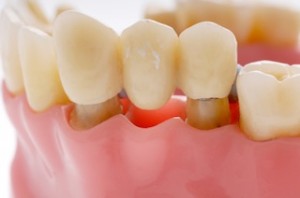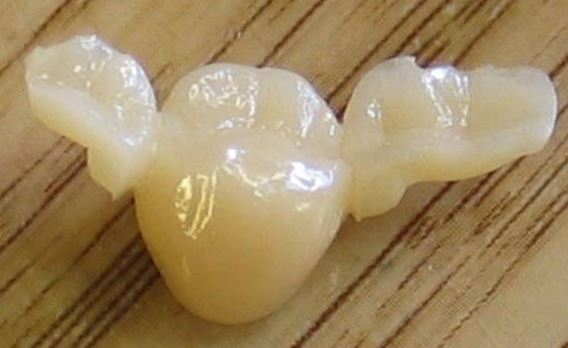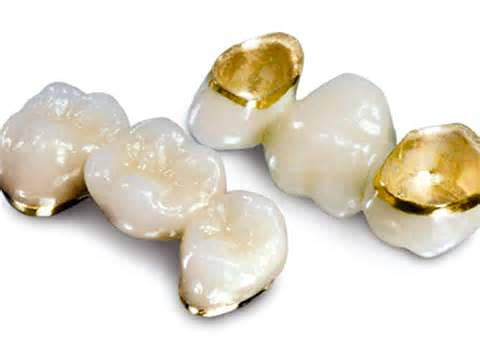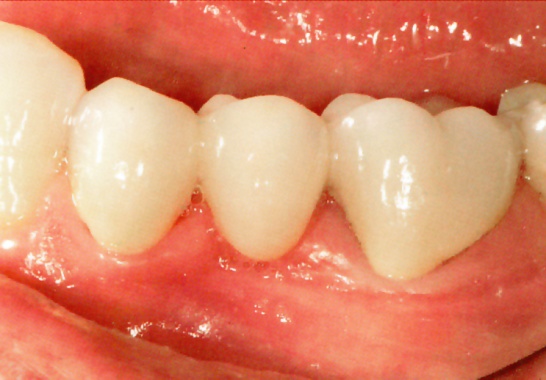Bridge reviews

The bridge is a structure consisting of two crowns and an artificial tooth located between them.
Crowns are fixed on the abutment teeth, which are adjacent to the missing tooth. The bridge can be fixed to the abutment teeth using crowns, inlays, crowns with pins, or using special glue.
- Bridge-shaped artificial teeth repair missing teeth in a row. Bridge prosthetics is offered to patients when there is a lack of one or more teeth in a row.
- Today, there is a large selection of bridge structures that differ in that they can be made of various materials, which means they have different costs. The bridges can be metal, cermet and non-metal ceramics.
- After prosthetics, patients should regularly (preferably twice a year) visit the dentist, as well as carefully care for the oral cavity and dental structure. These measures will allow the bridge to serve its owner for a longer time.
The chewing load exerted by the structure when chewing food is distributed evenly between the gum and other teeth.
- The advantage of bridges is the ease and speed of getting used to them.
- The disadvantage of the bridge structure is the need for turning, and sometimes the depulpation of the supporting teeth.
Kinds
In the practice of prosthetics, the following types of structures are used:
- Adhesive bridge.
- Solid cast bridge construction.
- Ceramic metal bridge.
- Stamped bridge structures.
- Bridge made of metal-free ceramic.
- Bridge construction with submerged supports.
Adhesive bridge

The advantage of this design is that it is attached to the abutment teeth using a special glue, and therefore there is no need for turning the teeth.
Restoration of missing teeth can be carried out in one go.
One-piece bridge
The design is made of metal by casting.
The crown of the prosthesis is firmly enough attached to the turned tooth and as a result of the absence of seams and gaps between the crowns and artificial teeth, food particles are not clogged under them.
This design completely eliminates the destruction process at the junction of the teeth.
The disadvantages of the prosthesis include the presence of high thermal conductivity, which is why when eating hot food, discomfort often occurs.
Cermet bridge

Designs combine the advantages of solid metal castings and ceramic prostheses.
The main properties of cermet structures are biocompatibility with oral tissues, high material strength and excellent aesthetics.
But, in the absence of more than three teeth in a row, as well as the presence of gum disease, it is better to refuse such prostheses.
Stamp-brazed bridge
Designs of this type have been used since Soviet times.
A prosthesis is made of a thin-walled metal sleeve by compressing a plaster copy of the prosthetic tooth.
At the junction of the teeth, they are soldered and, thus, the continuity of their connection is ensured.
The disadvantages of stamping are that:
- There is no high accuracy of the fit of the crown to the tooth; as a result, it becomes impossible to produce the exact shape of the tooth. When prosthetics with such crowns, there is a high probability of formation of caries under the crown and further destruction of the tooth, and, as a consequence, its loss.
- As a result of the presence of thin walls on stamped crowns, they wear out faster, which can lead to exposure of supporting teeth and damage to crowns. In this case, bleeding of the gums may be observed, an unpleasant aftertaste in the mouth as a result of oxidative reactions may appear.
Ceramic bridge

Modern prostheses are made of zirconium oxide, since this material is biocompatible.
And the presence of modern technologies for manufacturing structures allows you to create crowns that perfectly repeat the color and shape of the tooth.
Maryland Bridge
In bridge prosthetics, designs with submerged supports are used. The difference from classical prosthetics is that the tooth is turned not completely, but partially. Small teeth are created in the abutment teeth, into which the legs of the prosthesis are immersed, and then closed with fillings.
Advantages and disadvantages:
- The advantage of this technique is the preservation of tooth pulp and minimal removal of the enamel layer and, as a result, the absence of gum inflammation.
- The design is applied only when the abutment teeth are absolutely healthy.
- The prosthesis is ideal only as a temporary restoration.
- The design is short-lived, as the legs can be unfastened as a result of a large load.
- The prosthesis is used only on the front teeth.
Video: “Metal-free crowns and bridges based on zirconium oxide”
Bridge Patient Reviews
- Three years ago, as a result of an injury, she lost two teeth. I went to the dental clinic about prosthetics, where I was offered to perform implantation or to install a bridge. I immediately refused to install implants, because I was not ready either mentally or financially. Since it was necessary to restore the front teeth, the choice was made in favor of zirconium. The dentist prepared abutment teeth on which temporary dentures were put on. A week later, a zirconia bridge was installed in place of the plastic crowns. The first few days felt discomfort, which soon passed. I have been using the prosthesis for six months now.
- Two years ago, I installed a ceramic-metal bridge on the upper three teeth. A prosthesis was installed in a week. Before installation, the dentist sharpened the abutment teeth so that they became like toothpicks. True, they were immediately closed with plastic crowns during the manufacture of a permanent prosthesis. I did not get used to new teeth for long. In the process of use, I often feel discomfort from the fact that food particles falling under artificial teeth cause irritation of the mucosa. You have to constantly clean the space between the gum and the structure.
- A few years ago, a badly damaged front tooth was removed. Last year I went to the clinic, as an urgent need to have a prosthetics.The doctor suggested installing an adhesive bridge, so as not to sharpen healthy supporting teeth. In a short time I got the design fixed to the abutment teeth using a special adhesive. The dentist said that the prosthesis would not last long and that ceramics and cermets should still be placed. The disadvantage of the prosthesis is that you have to limit yourself in food, excluding completely solid and viscous products, so as not to damage the structure.
- Twelve years ago, a gold bridge was placed on the front teeth. A year ago, there was pain and bad breath under the crown. I went to the dentist. Upon examination, it turned out that the cement on which the crown was fixed crumbled, and as a result of saliva and food particles falling under the crown, the tooth began to rot. I had to remove the prosthesis. As a result, the decayed tooth was removed, and the second abutment tooth was severely affected by caries. After the treatment and filling of the canals, it was decided to install a zirconium denture. The bridge structure was installed quickly, the discomfort after installation lasted no more than two days. Now everything is fine, except that food gets under the prosthesis and you have to constantly rinse your mouth thoroughly after eating and remove food residues from the structure.
- Eight years ago restored front teeth. I made a choice in favor of non-metal ceramics on a zirconium frame, because I wanted my teeth to look natural. The tooth preparation procedure was painful. They installed the prosthesis in two weeks, got used to the design quickly. For the entire time of using the prosthesis, the teeth did not fade and did not change color. The only drawback of the prosthesis is the high cost of prosthetics, but it's worth it.